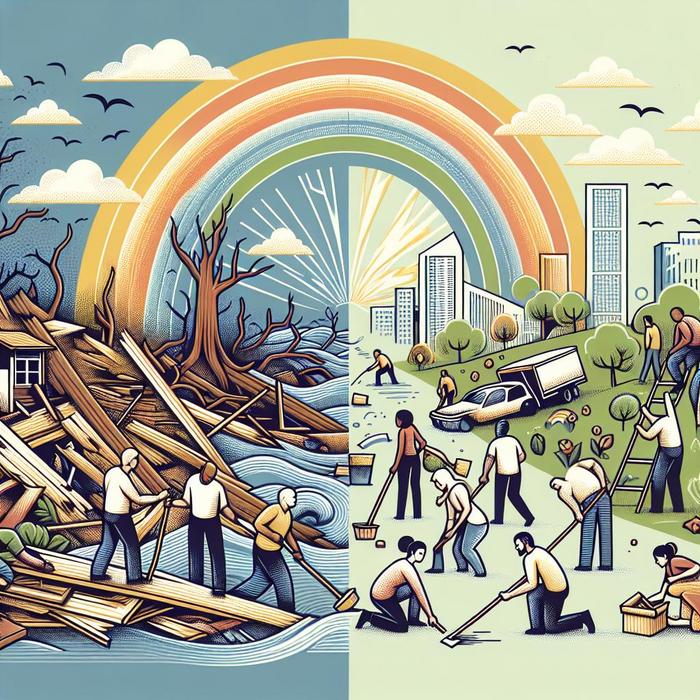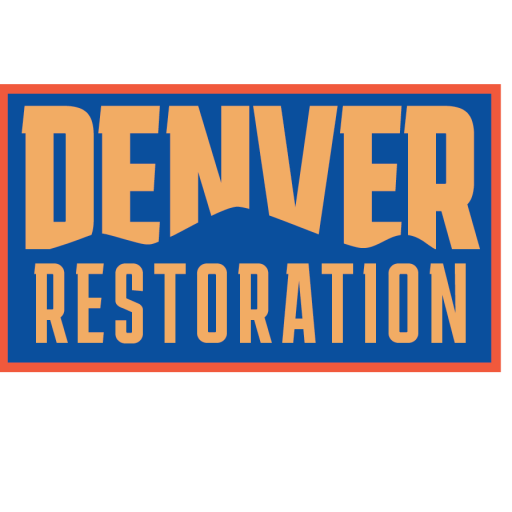Transforming the Aftermath: Effective Storm Damage Response
When disaster strikes, the immediate reaction is often one of dismay and confusion. Property damage can be overwhelming, leaving homeowners, business owners, and property managers feeling helpless. Fear, uncertainty, and financial concern are common responses. But what if we could transform these challenging situations from disaster to opportunity?This document published by the White House discusses the importance of an effective response in disaster management.
Understanding Storm Damage Response
A storm damage response is the systematic process followed to restore a property to its pre-loss condition after it has suffered damage from a storm. This involves a series of steps, from initial damage assessment and estimation, to restoration techniques and equipment usage, to communicating with insurance companies and ensuring legal compliance.
An Effective Response: More Than Just Restoration
An effective storm damage response, however, is much more than just repairing the damage. It involves understanding the emotional turmoil that homeowners go through when their homes have been damaged. It’s about providing comfort and reassurance during the recovery process while ensuring that the technical aspects of the restoration work are managed efficiently and professionally.
Unraveling the Value of a Prompt Storm Damage Response
When disaster strikes, the clock starts ticking. An immediate, effective response helps to minimize further damage, reduce downtime, and prevent secondary issues such as mold growth and structural instability.
A swift response can also mean the difference between a simple cleanup and a lengthy, cost-prohibitive recovery process. In our industry, we have seen countless cases where waiting too long to start the restoration process has led to even more extensive damage and higher restoration costs. Samaritan’s Purse, a disaster relief organization, echoes the value of a prompt response.
Turning Disaster into Opportunity
There’s an old saying that every cloud has a silver lining, and this is certainly true when it comes to disaster restoration. The restoration process can provide an opportunity to make improvements that may have been on your wish list for some time, such as replacing outdated fixtures or reconfiguring a room for better functionality.
Moreover, disasters can also serve as a wake-up call to strengthen disaster preparedness measures, both at home and within businesses. Having a detailed disaster plan and being proactive in executing it can significantly reduce the trauma and costs associated with future disasters.
Choosing the Right Restoration Partner
An effective response to storm damage requires expertise in a range of areas, including damage assessment and estimation, restoration techniques and equipment, environmental and health safety, insurance and legal compliance, and customer communication and crisis management.
Choosing a competent restoration partner is, therefore, crucial. They should be capable of not just restoring your property to its pre-loss state but also aiding you in navigating through the insurance claims process and providing emotional support during the recovery phase.
Learn more about the importance of choosing the right restoration partner in our earlier post, “Streamline Your Flood Recovery with Expert Water Extraction Services”.
Simple Steps towards a Positive Outcome
The journey of recovery after a disaster can be daunting. But with the right mindset, expert assistance, and a comprehensive plan, you can turn any disaster into an opportunity for improvement and renewal.
Remember, the measure of success is not whether you have a tough problem to deal with, but whether the outcome of your response to the problem is a better situation than before.
Cope with the mold issue effectively after a storm damage by understanding the measures needed for mold remediation, as elucidated in our post “Understanding Mold Remediation: Clear Steps to a Mold-Free Home”.
Disasters are unpredictable, but your response to them doesn’t have to be. With calmness, expertise, and swift action, you can turn any disaster into a beacon of opportunity.
Timely Action: The Crux of Storm Damage Response
Understanding the need for immediate and effective action following a storm disaster cannot be overstated. This isn’t just about restoring damaged property; it’s about swift action to prevent further damage. In several instances, waiting too long to initiate the restoration process has led to additional damage, prolonged recovery period, and ultimately, escalated restoration costs. Immediate action is essential to stem the tide, reducing downtime, and preventing secondary issues such as mold growth and structural instability. A document published by the ScienceDirect highlights this need for timely response.
Resilience Amid Disaster: Silver Linings and Lessons Learned
Moreover, a disaster does not necessarily have to be a setback. It can turn into an opportunity, a chance to make improvements and strengthen preparedness measures. Undoubtedly, a storm or any form of disaster leaves one in a state of disarray and uncertainty. However, disaster restoration provides a window of opportunity for improvements that could range from replacing outdated fixtures, redesigning space for better functionality, or even strengthening disaster preparedness measures.
A disaster also provides a wake-up call to bolster disaster preparedness measures both at home and in businesses. Armed with a detailed disaster plan and proactive execution, the trauma and costs associated with future disasters can be significantly reduced. For individuals and businesses impacted by storms and catastrophic weather, this document by the Texas Commission on Environmental Quality provides a detailed explanation of actions and steps to mitigate the effects of future disasters.
The Importance of the Right Restoration Partner
The magnitude of restoration following a disaster requires a comprehensive understanding of various domains, including environmental and health safety, insurance and legal compliance, customer communication, and crisis management. As such, choosing a competent restoration partner is integral.
An effective restoration partner is one that goes beyond just restoring a property to its initial state. They also play a significant part in navigating through the insurance claims process, empathizing and supporting during the recovery phase, and managing the more technical aspects of restoration work.
Refer to our previous post, “Achieve Complete Restoration Satisfaction With Professional Fire Damage Services”, to understand more about the role of a competent restoration partner.
From Feelings of Despair to Stories of Renewal
Faced with the towering task of recovery after a disaster can indeed be daunting. However, armed with the right mindset, the right help, and a solid plan, any disaster could be turned around for better. Remember, the measure of success lies not in the problems faced but the positive outcome designed from the situation.
Harness the opportunity to improve your property and quality of life by dealing with issues such as mold after storm damage. A clear understanding of mold remediation measures can certainly aid in effective recovery. Visit our post, “Take Control of Your Environment With Advanced Leak Detection Techniques”, to understand more about this.
Disasters, while unpredictable, do not have to result in a state of panic. With the right approach and application, along with swift action, disaster can indeed be turned into an opportunity for fresh beginnings.
Remain Vigilant: Preparing for the Next Storm
While we cannot control natural disasters like storms, we can prepare in order to minimize potential damage. Proactive preparation consists of two major components: structural preparation and financial preparation.
Structural preparation involves making sure that your property is resilient and ready to face the elements. Regular maintenance and early repair of any structural defects are key components of structural preparation.
Financial preparation, on the other hand, involves having a clear understanding of what your insurance policy covers, setting aside a disaster recovery fund, and engaging a restoration company on a standby contract.
To learn more about how to prepare for a storm, visit our post “Preparing for the Unexpected, Tips for Effective Disaster Planning“.
Storms in Context: Viewing Storms in a Broader Climate Context
Ultimately, it’s essential to understand that storm damage doesn’t occur in a vacuum. It’s part of a broader pattern of changing climate and weather conditions brought about by global warming. As the intensity and frequency of storm events increase due to climate change so do their destructive impacts.
What we need to do, as a society, is not only prepare ourselves for individual storms but also to work towards creating resilient communities that can bounce back from these events and reduce our overall carbon footprint. Documented by the American Red Cross Society, they have highlighted numerous ways communities can work together to build a resilient environment. The battle against storm damage is one aspect of a bigger fight against climate change.
Final Word: Converting a Crisis into Growth
Handling the aftermath of a storm requires emotional resilience, swift action, access to expert help, and a recovery plan. Equally important is the readiness to see beyond the immediate disaster and find avenues for improvement and renewal. Remember, with the right approach and response, you can transform any crisis into an opportunity for growth.

